James Hinton, aka The Range, is an unlikely candidate for forward thinking electronic producer. The son of a Pennsylvania farmer, Hinton’s longstanding fascination with mathematics (reflected in production alias) led him to Brown University, where he graduated with a degree in physics. However, since the age of 13 he has been honing his skills, and has struck upon a unique and riveting sound.
Basing his tracks around the manic drumlines of Chicago’s footwork genre, Hinton integrates fluttering keyboard work and silky RnB melodies. His oddball vocal samples, ranging from RnB standards to off-the-wall mutterings, further serve to give the music a dream-like quality. The result are tracks that are simultaneously introspective and frenzied, forcing you to think while barely giving you a second to do so.
Hinton is on track for a stellar year. Since the March release of his Panasonic EP, the followup to last year’s Pitchfork Best New Music recipient Nonfiction, the producer has been playing opening sets for big buzz names, including CHRVCHES and Phantogram. Allston Pudding chatted with him in advance of his Hudson Music Project appearance and opening slot for Jon Hopkins at The Sinclair:
Allston Pudding: Footwork seems an unlikely genre for an emerging artist to use as their framework. What attracted you to it?
James Hinton: I loved how percussion was more than just the spine of footwork, it found it’s way into every aspect of every song for me in the beginning of this project. Making tracks at 160 was special, I found there was a natural glue that existed such that no matter how frenetic you made any set of the elements the railroad was always implied, even more so than in jungle. That property allowed me to experiment a lot more while still maintaining the ability to be relevant in a club setting.
AP: Who were your biggest early influences?
JH: When I first picked up making electronic music I was listening to Aphex Twin and Squarepusher a lot, as well as lots of post rock. Mostly Do Make Say Think.
AP: What is your approach to writing a track?
JH: It’s pretty evenhanded between starting with samples, drum lines and melody. Lately, it’s skewed a bit more to writing piano lines first, a lot of the new stuff has a bit more complex voice leading as the backbone.
AP: A lot has been said about your excellent use of vocal samples and you’ve mentioned that many of them are taken from random YouTube videos you find. Do you tend to pick out things that will work with an instrumental that’s already mostly formed, or do you tend to work the music around the vocal?
JH: It depends on the situation, again it tends to be a mix of both. A lot of times I’ll start with the intention to use a certain vocal sample and end up wiping it completely, but leaving the structure that I built up around the vocal. And it certainly goes the other way as well. I want to keep that part of the process as democratic as possible. It’s important to me to be able to freely paint over or let go of something no matter how long its been in a track.
AP: You attended Brown at the same time as Nicolas Jaar and Dave Harrington (of Darkside). Would you say the artistic scene there skewed towards the experimental attitude that the three of you epitomize, or were you breakaways?
JH: I was actually just talking to Dave about this – I think Brown was pretty special in that people were very down to have what Nico, Dave or I were doing be the center of a house party that normally may have been dominated by a top 40 playlist. Dave would kill a house party for four hours with a four-piece band playing the most out-there music and it would go off. But yeah, I thought what we had going was normal but in retrospect we were incredibly lucky to have such a supportive atmosphere.
AP: According to your Pitchfork interview, Jaar helped picked out tracks for your first album,The Big Dip. Is there potential for any future collaboration?
JH: We’ll see what happens, I highly value his work. I think it would be fun to see what we would produce in the studio together.
AP: Do you ever have a listening setting in mind when you’re producing a track? (eg. Driving, studying, partying, club, etc.)
JH: I’d like my music to work well in more than one context. The solitary setting is definitely a big one, but it continues to be a priority to try to exist at the saddle point of all of those areas.
AP: You’re coming off of a string of dates with Chvrches and Phantogram. Does your approach to live performance change when you’re playing for a crowd who might not have listened to you before?
JH: I let the music I happen to be working on guide my set more than anything else. That said, having the remixes for Chvrches and Phantogram is a nice way to give the audience insight into my process. When I play a piece of something they know and love I think it lets them into my music. Its a nice way to connect with people.
AP: Beyond touring, what other projects do you have in the cards?
JH: I’ve been able to write a ton on the road lately and work on some collaborations which has been really good. I’m working on another album now, that’s what I’m focusing on at the moment.
If you’re going to The Hudson Music Project, you can catch The Range on Friday at 8:30 PM in the Catskill Cave. He will also be opening for Jon Hopkins on Sunday July 13th at The Sinclair.

